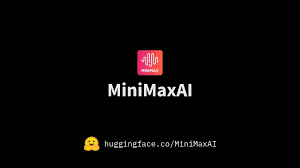Technology
Featured
China's MiniMax AI Shakes Up Open-Source Landscape with 'M1', a Model Rivaling GPT-4
Editor
Jun 22, 2025
min read
6 views

SHANGHAI – Chinese AI research company MiniMax has made a dramatic entrance onto the global stage with the release of 'M1', a powerful new open-weight AI model that is already drawing comparisons to industry leaders like OpenAI's GPT-4 and Anthropic's Claude. The model, detailed in a technical report released on June 17, 2025, boasts several groundbreaking features, including a massive one-million-token context window and an exceptionally efficient architecture that challenges the notion that top-tier AI requires astronomical training costs. The M1 model is built on a hybrid Mixture-of-Experts (MoE) architecture, a technique that activates only a fraction of the model's total parameters for any given task, leading to significant gains in efficiency. In M1's case, while the model has a total of 456 billion parameters, only 45.9 billion are activated per token. This is combined with a novel 'Lightning Attention' mechanism, which allows the model to process its vast one-million-token context window with remarkable speed. For comparison, at a generation length of 100,000 tokens, M1 reportedly consumes only 25% of the computational resources (FLOPs) of other large models like DeepSeek R1. This one-million-token input capacity allows the M1 to process and reason over enormous amounts of information in a single pass, such as entire books, lengthy legal documents, or extensive codebases. Furthermore, it has an impressive output capacity of eighty-thousand tokens. MiniMax claims that M1 outperforms other leading open-source models on a variety of complex benchmarks, including software engineering, tool usage, and long-context tasks. The company's training methodology is also noteworthy. To enhance the model's reasoning capabilities, MiniMax trained M1 using a novel reinforcement learning algorithm called CISPO (Clipped Importance Sampling Policy Optimization). The training data included a diverse range of problems, from traditional math and logic puzzles to real-world software engineering tasks conducted in a sandbox environment. This focus on practical problem-solving appears to have paid off in the model's performance. The release of M1 as an open-weight model is particularly significant. By making the model's parameters available to the public, MiniMax is empowering researchers and developers around the world to build upon their work, fostering a more collaborative and competitive AI ecosystem. This move is seen as a direct challenge to the closed-source approach of major Western AI labs. The model is available on platforms like Hugging Face, allowing for broad access. The emergence of a model with M1's capabilities from a Chinese company also highlights the rapid advancements being made in the country's AI sector. It signals that the development of cutting-edge foundational models is no longer confined to Silicon Valley, setting the stage for increased global competition and innovation in the years to come.
Editor
League Manager Editorial Team





Leave a Comment